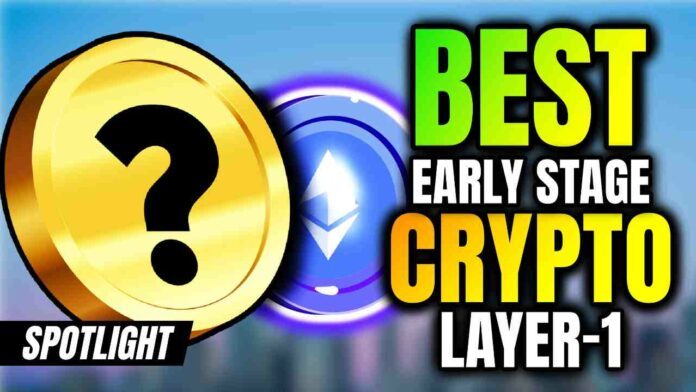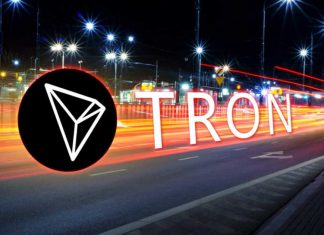Take a look at this. In 3 months COTI price soared 50%. Now look at this. In 1 month IMX pumped 200%. What’s in common between these two blockchains? If you don’t know, let me tell you. COTI and Immutable X are application specific blockchains or what is called an appchain.
These price pumps clearly tell us Appchains are becoming a big thing in crypto. In this article I will introduce you to an early gem in the appchain space that is licenced by Abu Dhabi Global Market (ADGM). It has an ambitious goal of becoming the fastest financial appchain in crypto. Lets dive in this early crypto opportunity. Meet Venom.
What is Venom?
Appchains are a fast-growing narrative and sector in the cryptoeconomy. And many appchains, for now, fall into one of 2 categories:
- Games/Metaverse.
- Financial (DeFi & TradFi).
You may remember that Axie got so popular it was clogging the entire Ethereum network. They went and created their own appchain with the Ronin sidechain. Well, now COTI which is getting tons of new interest not just from Cardano maxis is an example of a payments appchain. Sei, built on Cosmos, is an example of a TradFi based appchain. They are trying to bring exchanges and some of the trillions of dollars in TradFi transactions to blockchain. So is Algorand.
And this idea of building an appchain for real world assets (RWA) is what Venom is all about. They even have a fund to help incubate new projects dealing with RWA.
Private blockchains for compliance and security, public blockchains for transparency and innovation. #Venom’s heterogeneous architecture merges the best of both worlds, creating powerful and groundbreaking use cases in #DeFi and #TradFi pic.twitter.com/d6AkqGd6ol
— Venom Foundation (@VenomFoundation) April 5, 2023
Venom will bring RWA and legacy finance transactions to the blockchain. They will also become a hub for issuing and managing CBDCs. But that’s not it, Venom has made some very smart decisions and one of them is modularity that is crucial to develop fast and light financial apps.
Modularity in Venom
At Altcoin Buzz, we know that modularity is going to be one of the BIG narratives over the next 2-3 years. Without this, blockchain cannot achieve mass adoption.
You know before modular chains, all existing chains were linear. This means all of them perform every single function of the chain themselves. But is that really necessary? Does this make them bulkier, slower and not so fit for the world?
(1/3) #Venom’s workchains, can be viewed as a specialized layer-1 blockchain, secured by a global validator set. pic.twitter.com/UsCFn46cEN
— Venom Foundation (@VenomFoundation) March 27, 2023
Lets try and relate it to this everyday example from our life. A new cell phone company doesn’t go into a big city like London or New York, and think where can I build some new towers for my service? Of course, they don’t. They rent space on other companies’ towers.
No reason why blockchains can’t be lighter and faster and outsource some of the other functions of the chain. Venom does this. It’s one of many smart decisions they made to maintain the speed, power, and security that a financial appchain needs.
And you will be hearing a lot more about modular blockchains soon. What do you think of modular blockchains? Do you have a favorite modular project? Let us know in the comments below.
Venom’s Mission
Venom’s mission is twofold:
- Financial inclusion and banking the unbanked.
- Permit real word asset trading and financial services through blockchain.
And these sound like they are opposite of each other and not related at all. But they are related. So, Venom believes, and we agree, that blockchain can help many people. Financial inclusion is a big part of crypto’s mission. Add censorship resistance to that so any 2 people can transact and you are already starting to join the 2 groups together.
(3/8) 🔷 The Solution
Our solution bypasses critical system failures at the design level, with instant finality, infinite scalability, and <$0.01 transaction fees. https://t.co/sbeyuhbsTH
— Venom Foundation (@VenomFoundation) March 15, 2023
Those using legacy finance want the transparency and openness that blockchain brings. And they want access too. They don’t want only the financiers that Goldman Sachs recommends. They want the financiers who are best fit for their projects no matter where they are. Blockchain gives that. Legacy finance doesn’t. And I don’t think I have to use up much space on the problems around:
- Banking.
- Identity documents in many parts of the world.
- The whole KYC thing.
- How banks fail to serve the people.
Venom sees these as related groups too. They know a fast, secure appchain helps everyone. Venom wants to see people who could not open a bank account transact openly over mobile with blockchain to get things done. And so do we. It’s an admirable goal too.
This is how they decided on how to build out their chain like the decision to go modular. And like the decision to use sharding from the beginning.
The Tech Stack Solves the Trilemma
A financial appchain has to be fast and secure. Venom knows that to grow they must be both. In fact, all 3 of the blockchain trilemma are important. Dealing with financial transactions means zero compromise on security or scaling. Both are necessary to make money. And Venom wants decentralization too.
So, how are they solving the trilemma? First, there are 3 major components. They are:
- Masterchain.
- Workchain.
- Shardchains.
Venom’s technology is virtually unrivalled in its field. ⚙️
And our asynchronous architecture plays a big role in it. Learn more about it here: 👇https://t.co/NfqsGzaCLe
— Venom Developers (@VenomDev) March 8, 2023
It’s probably easiest to compare this to protocol we are more familiar with. Cosmos. The masterchain is the layer 0. Like the Cosmos Hub. And if you want, you can buy ATOM and stake it there and do nothing else. Same here. When the Venom token becomes available, you can only buy and stake that. As you know, that helps secure the network.
Now the workchains are the Layer 1s built on Venom. So they are like the independent L1s on Cosmos like Cronos, Osmosis, Terra, or our Master Portfolio member Kujira. All these are Layer 1 chains but share some common characteristics and tools with each other and other Cosmos chains.
And by the way, just like Cosmos is trying to increase ATOM’s value and utility with its Shared Security proposals, Venom already has it. Venom’s masterchain provides security to the workchains. They also provide validators and network configurations to help the network run too.
More About Venom Solving Blockchain’s Trilemma
Lastly, we have the shardchains. Shardchains are named for their sharding abilities. What they really do for Venom is provide the computing power for a group of transactions. The groups of transactions are set up by smart contract address. So everyone who is swapping on Uniswap will have their transactions go through the same shardchain. But those using Sushiswap might not. Their smart contract address might be on a different shardchain.
So the shardchains are the actual shards. They distribute the computing power so the network can confirm more transactions faster.
(6/10) The Venom blockchain also scales vertically through its use of the Dynamic Sharding Protocol.
This protocol allows the network to adapt to changes in load by splitting or merging shardchains as needed, improving overall performance and achieving high tx throughput. pic.twitter.com/UvsoqxUrjZ
— Christopher Louis Tsu (@louis_tsu) March 31, 2023
I know this sounds technical and you’ve heard a lot about sharding recently. But remember, Ethereum thinks sharding is the solution for long term scaling. That’s how important they say it is. Venom is building it into something scalable from the very beginning.
That’s the point. It’s cheaper to learn from other’s mistakes than you making them yourself. Sharding increases both speed and scale in the network with no drop in performance or security. That’s what it’s about.
Venom is almost in testnet now. And they want you to go try it and tell them what’s working and what’s not. So go here when it’s ready (link) and try it out. The financial appchain of the future is here now. Today. And you can help them make it even better and get in early while you are doing it.
⬆️ For more cryptocurrency news, check out the Altcoin Buzz YouTube channel.
⬆️ Our popular Altcoin Buzz Access group generates tons of alpha for our subscribers. And for a limited time, it’s Free. Click the link and join the conversation today.
Disclaimer
The information discussed by Altcoin Buzz is not financial advice. This is for educational, entertainment, and informational purposes only. Any information or strategies are thoughts and opinions relevant to the accepted levels of risk tolerance of the writer/reviewers and their risk tolerance may be different than yours. We are not responsible for any losses that you may incur as a result of any investments directly or indirectly related to the information provided. Bitcoin and other cryptocurrencies are high-risk investments so please do your due diligence. This article has been sponsored by Venom. Copyright Altcoin Buzz Pte Ltd.




























